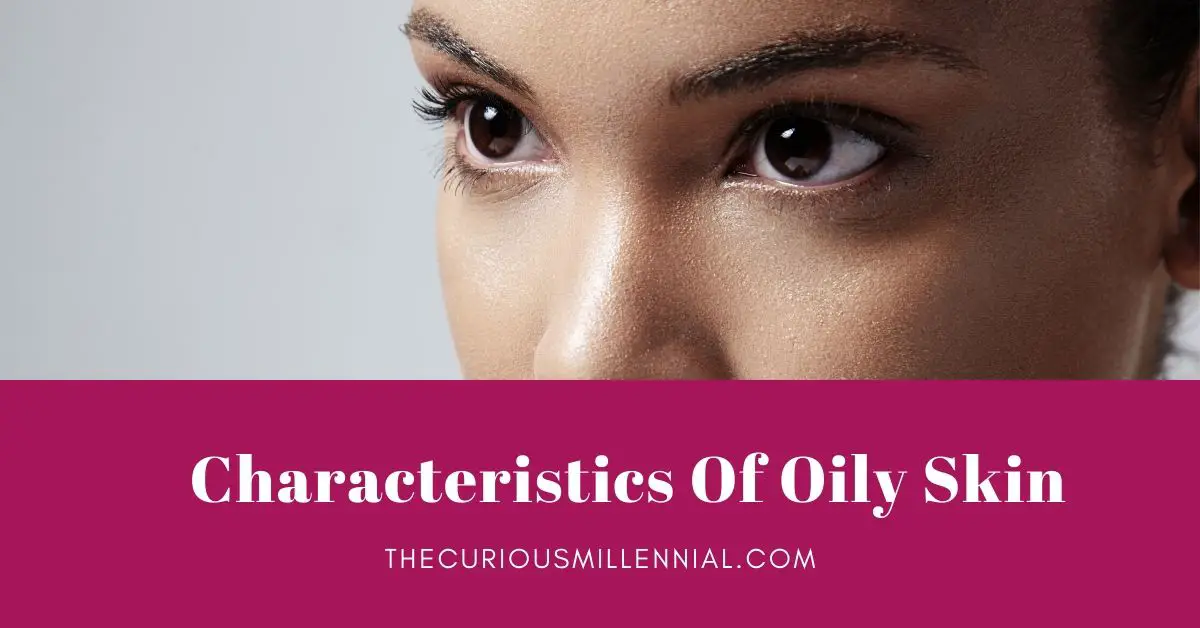If you constantly suffer from a greasy nose and an shiny forehead, you might have oily skin. How can one be sure about it though?
Blackheads, pimples, and acne are common side effects and potential symptoms of having oily skin, but not definitive signs that you have oily skin.
What are some other characteristics of oily skin then?
Understanding oily skin can be hard, and it can be difficult to control oily skin without properly understanding what it really is.
If you don’t take proper care of your oily skin, you might have enlarged pores. Dead skin cells may then start accumulating in those pores. That sets off a chain of events that you are familiar with.
In this post, let’s try to understand what is an oily skin type, and what are some common characteristics of oily skin on the face. By knowing this, you can discern it at earliest and act accordingly.
What Is Oily Skin Type?
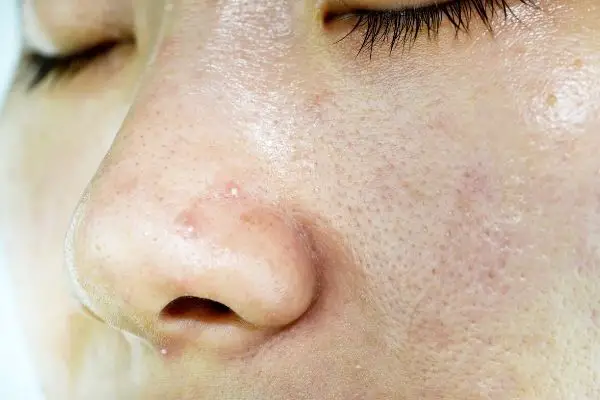
Everyone’s skin needs a certain amount of oil to keep it hydrated. These oils when produced in optimum quantities, are good for your skin.
This oil is produced by the sebaceous glands, which are located under the top layer of skin all over the body, but predominantly on the face and scalp. These glands are formed around a hair follicle in the epithelial layer of the skin. The epithelial layer is the one that lies just below the top layer of our skin.
The cells of the sebaceous glands multiply and disintegrate, producing a substance called sebum. Sebum is a waxy, oily substance that lubricates our skin and prevents it from becoming irritable. Sebum is secreted through the pores of our skin along with sweat.
You know that our skin replenishes itself every 28-30 days. That is, a fresh layer of skin replaces the old skin every 4 weeks.
At any point in time, a mix of dead cells and fresh cells are present in the top layer of skin, sebum acting as a binder to keep them in place. When their life is over, the dead cells get flaked off.
However, when too much of this sebum is there on the skin, it prevents these dead cells from falling off. This swamp clogs the skin pores, prevents the skin from ‘breathing’, and acts as a breeding ground for bacteria, which cause acne, pimples and so on.
People with different skin types produce different levels of sebum. People with oily skin produce more sebum than normal because of overactive sebaceous glands.
It is normal to have oily skin when you wake up, at the end of a tiring day, or even when the climate is hot. But too much production of this oil by the sebaceous glands is not good as we just saw, and that is when skin acquires its oily character.
Oily skin, in turn, can lead to a host of other skin imperfections.
How Do You Know If You Have Oily Skin?
It’s not that difficult to figure out that you have oily skin.
One common way to find out whether your skin is oily is to wash it early in the morning with your daily cleanser, pat it dry and leave it like that. Do not apply any sort of makeup on your skin.
If you find that your face becomes oily and shiny in a few hours, you have oily skin.
Why Is My Face So Oily?

The root cause of oily skin is overactive sebaceous glands, but there are many reasons why these glands are overactive.
It is typically hereditary, but can also be affected by hormones and environmental factors. Heat and humidity also lead to an overproduction of oil in glands.
High-stress levels can also increase the production of sebum by the body.
Some women may experience an increase in oil production during the onset of puberty, while menstruating, during pregnancy or during menopause.
Usage of wrong skincare products or excessive medication can also lead to a spike in the production of oil in the glands.
It’s possible to have more than one cause of oily skin.
Let us now get into the oily skin characteristics.
What Are The Characteristics Of Oily Skin On Face?
Skin can be categorized by how much oil is produced by our skin. Depending on this, skin can be classified as oily, dry, combination or sensitive.
In order to tell if your skin is an oily type, there are a few signs to look for. Let’s have a look at some of the oily skin characteristics –
1. Your Face Is Shiny And Appears Greasy Throughout The Day
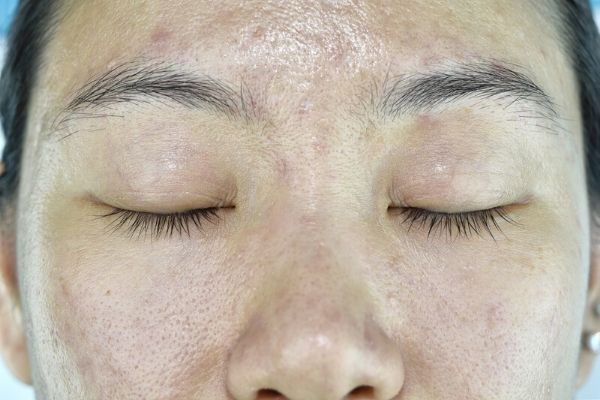
This is obvious. If you have naturally oily skin, I am quite sure that shine is your number one enemy.
Fellow oily skin people out there know the feeling when one has a greasy face. It feels as if there is always a thin film on top of your skin. You step out of your house in the morning with perfect skin, and by afternoon you find yourself reaching out for your blotting sheets.
2. You Have Visibly Enlarged Pores
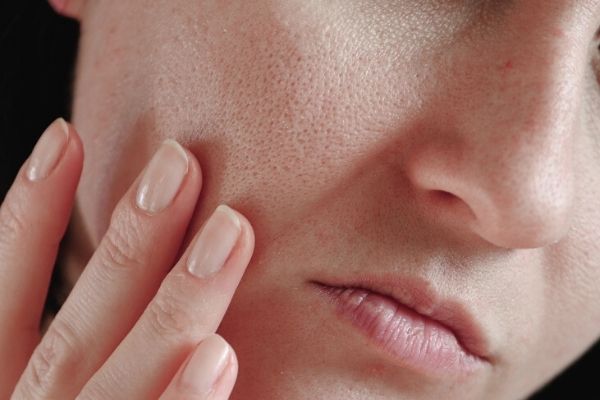
Pores are tiny holes in a person’s skin. In people with oily skin, excess oil produced by the sebaceous glands gets trapped in these pores.
When combined with dirt and makeup, the pores can become blocked. This buildup in the pores stretches the skin around that area and makes the pores appear bigger in size. If a pore remains clogged, it may lead to breakouts.
Is it possible to shrink pores? No, it’s not. But it’s possible to reduce their appearance by using a clarifying toner and exfoliant.
3. Your Skin Feels Dirty Even After Washing Your Face
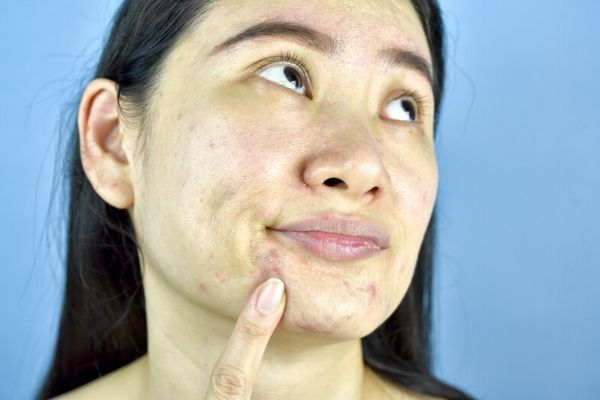
You washed your face and just a little later, the oil just comes right back. It’s as if you never washed your face. Sounds familiar?
Dirt tends to settle in the clogged pores that are formed as a result of excess oil production. The presence of dirt in the top layer of your skin makes your skin look tired and dirty.
This doesn’t mean that you should keep washing your face throughout the day. Over-washing your face can cause your skin to produce more oil than there already is.
4. You Are More Prone To Acne And Breakouts
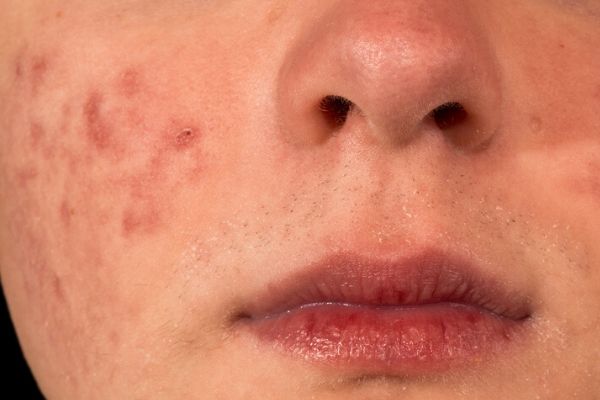
Oily skin is believed to be the major cause of acne and breakouts.
Sebum produced by overactive sebaceous glands mixes with dead skin cells and other debris to clog pores. These clogged pores cause bacteria to thrive and result in acne and breakouts.
You can banish your breakouts and prevent future acne spots by using a gentle cleanser containing salicylic acid.
5. Fewer Creases Over Your skin

Well, it’s not a myth. There is sound reasoning behind this.
Natural oils present in people with oily skin helps lubricate the skin, making it smoother.
Oily skin tends to be thicker and less prone to dehydration (due to the presence of natural oils), which definitely leads to less fine lines and wrinkles. This tends to give a long-lasting “youthful” appearance.
So, if you don’t see fine wrinkles over your body, you might have oily skin! Sounds funny. Isn’t it?
6. Makeup Doesn’t Stay On Your Face And Seems To “Slide Off”
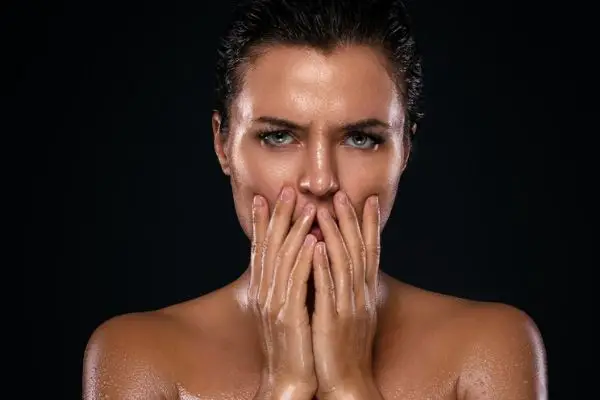
Oily skin has its pluses and minuses. On one hand, your face remains moisturized all day, on the other hand having oily skin means your makeup will not stay and “slides off” your face. Excess oil melts away your makeup and you are left with cakey makeup.
Types Of Oily Skin
1. Oily And Dry Skin – Combination Skin
This is the most common type of oily skin. The T-zone area, which includes the forehead, nose, and chin, is usually oily, while the cheeks are dry. This type of skin can be a bit tricky to deal with because you don’t want to over-dry the cheeks while trying to control the oiliness in the T-zone.
2. Oily Dehydrated Skin
This type of skin is very common in the summertime. The skin is oily, but it also feels dehydrated and tight. People with this type of skin often have large pores and are prone to breakouts.
3. Oily Sensitive Skin
This type of skin is similar to dry sensitive skin. It’s very sensitive to products and can become irritated very easily. The skin is also very oily, which can make it difficult to find products that will work for you.
4. Oily Acne-Prone Skin
This type of skin is the most common type among teenagers. The skin is oily and acne-prone, meaning that it’s prone to breakouts and blackheads. People with this type of skin need to be very careful when choosing products, as many products can actually make the acne worse.
5. Very Oily Skin
This is the most extreme type of oily skin. The skin is so oily that it can be difficult to keep it clean. Makeup often doesn’t stay on very well, and the face can look shiny and greasy by the end of the day. People with this type of skin need to be careful when choosing products, as many products can actually make the oiliness worse.
6. Oily Skin With Large Pores And Blackheads
This type of skin is very similar to oily skin, but it also has large pores and is prone to blackheads. The pores can be so large that they are visible on the surface of the skin. People with this type of skin need to be careful when choosing products, as many products can actually make the pores look larger.
7. Shiny Skin That Is Not Oily
This is not actually a type of oily skin, but it can be mistaken for oily skin. This type of skin is very shiny, but it is not oily. The skin may look greasy or sweaty, but it is not actually producing oil. People with this type of skin often have large pores and are prone to breakouts.
8. Oily Skin In Men
This is a very common type of oily skin in men. The skin is shiny and greasy, and it is often accompanied by large pores. Men with this type of skin are often more prone to breakouts than women.
9. Oily Skin With An Odor
This type of skin is very rare. The skin is oily and has a strong odor. This odor is often described as “fishy.” People with this type of skin are often more prone to breakouts than people with other types of oily skin.
10. Itchy, Oily Skin Rash
This is a very rare type of oily skin. The skin is oily and itchy, and it often looks red and inflamed. People with this type of skin are often more prone to breakouts than people with other types of oily skin.
Caring For Oily Skin

People with oily skin tend to struggle with taking care of their skin, owing to the side effects that come with it. Many people with oily skin suffer from acne, which makes them “pick” at their face often. This does more harm than good as it brings more bacteria to their face.
Read: Tips To Get Rid Of Oily Skin
If you have oily skin, make sure to always cleanse using a gentle cleanser, and moisturize using a light moisturizer or serum. Exfoliate using a product having salicylic acid as one of the ingredients, but no more than twice a week.
Another product that many people with oily skin forget is sunscreen. This is because many sunscreens available in the market cause people with oily and acne-prone skin to break out further. But remember, not using a sunscreen is not right either!
You got to use the RIGHT sunscreen for your skin.
There are a lot of good products available in the market for oily skin. Do your research and find the right one.
Monthly facials are also a great way to remove excess oil or dead skin cells from the skin surface. An aesthetician can help you better understand your skincare needs in order to make the facial a beneficial rendezvous.
Remember, you are not alone in your oily skin predicament. With the right knowledge, a little diligence, and a little perseverance, you can easily get on top of your oily skin issues.
Do give your suggestions and share your story in the comments section below.
I hope you got some insight into oily skin characteristics. Don’t forget to comment below if you liked this post, or if you have some other suggestions.
